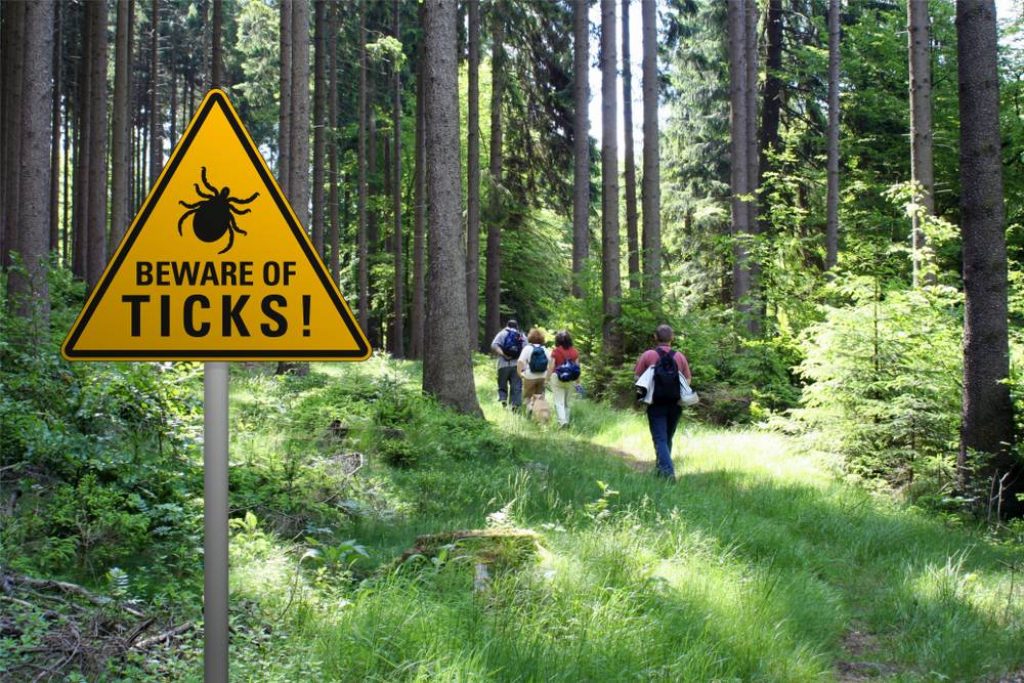
Lyme Disease Prevention For Seniors
Lyme disease is an infectious bacterial disease that can be carried and spread to both humans and animals, primarily by the black legged tick and deer tick. Not all ticks carry the disease, but those that do pose a serious threat to the immunocompromised, especially babies and seniors.
Related Topics (Sponsored Ads):
These particular ticks often bite and suck the blood of deer, birds and mice who are infected with Lyme disease, then become carriers themselves. This potentially life-threatening bacterium is known as Borrelia burgdorferi, and it’s the most common tick-borne disease in the thick woodland and forest areas of the United States and Europe. The disease was first discovered in the town of Old Lyme, Connecticut, which gave it its name. The insidious disease does not cause any debilitating symptoms right away, but will quickly leave a mark on the area that resembles a bull’s eye on your skin. Seniors are especially susceptible to getting Lyme Disease from tick bites due to weaker immunity. Therefore, it’s vital that seniors follow preventative and protective measures.

Important Info Regarding Lyme Disease
Lyme can be circulating in the human or animal host’s body for weeks before the significant symptoms appear, such as fatigue, arthritic and painful joints, fever, Bell’s Palsy, severe headaches, cognitive impairment, etc.
Luckily, Lyme disease takes around 36-48 hours or so to get into the bloodstream, so if you spot the infectious tick on your skin and remove it quickly enough, your risk of contracting the disease is relatively low. However, it’s important to note that those who recover from Lyme are not immune and can get it again if they are not vigilant. Worse still, patients often experience symptoms for months or even years after recovery.
The symptoms vary depending on the individual, and the level of severity depends on how long the tick was present on the skin. If you or your pet have taken a walk or vacationed in grassy, forest or woodland areas recently, and you suddenly start feeling symptoms just days later, you need to seek medical attention right away. The longer the disease circulates in the bloodstream, the worse the symptoms get and the harder it is to cure.
Listed below are some of the most effective preventative measures against ticks and Lyme Disease.
Wear Sneakers And Protective Clothing
Every time you decide to take a walk or camp out in forest or woodland areas that are probably tick infested, always wear long sleeve shirts, long legged pants, sneakers and high rise socks to protect your skin.
Ticks cannot fly or jump, but they do hang out on leaves, grass and sticks. They can easily get on your leg, arm or other part of your body as you’re walking through tall grasses or fallen leaves, and you likely won’t even feel or notice it. For extra strength anti-tick protection, apply the chemical Permethrin onto your clothes.
Keep Your Dog Away From Tick - Infested Areas
If you own a dog, they are more likely to get ticks than you are, especially if you live in or near an area where many ticks are lying around. And since our fur babies have a lot of fur or hair, it’s all but impossible to notice the tick/ticks on them right away.
Dogs are just as susceptible to Lyme Disease as humans are, and they develop similar symptoms which require immediate veterinary attention. Therefore, it’s critical to remain on guard. Check your pet’s skin every single day after a walk or an outing, and never let them roam around outside without careful supervision.
Apply A Safe Insect Repellent
It’s really best and safest to avoid tick infested areas altogether, but if your heart is set on it and you don’t have protective clothing due to the heat of the summer, then this is a no brainer.
Buy an insect repellent that contains 10 percent DEET- This will protect you for about 2 hours against ticks and mosquitos, which are even more notorious for spreading infectious diseases. Be vigilant and don’t forget to reapply it every 2 hours. To be on the safe side, don’t use more DEET than what’s required for the time you’ll be outside.
Keep Your Front/Back Yard Clean
Do you have a tree in your yard where its leaves often fall and cover the ground? If so, clean it up and get rid of it as soon as possible, as these are areas where those nasty parasitic ticks often like to wait for their next victim. Dogs often get ticks due to unkept yards that are full of leaves and other natural debris.
Throw Clothing And Camping Equipment In The Dryer
As soon as you come back home from a camping adventure, throw your clothes and any heat able equipment in the dryer on high heat. The high temperature will kill any ticks that might be lurking in them. This is especially helpful against immature ticks, which are tiny and very hard to spot.
Remove The Tick With Tweezers
If you or your dog already have a tick, apply tweezers near the head or the mouth of the tick, then pull gently. Check to be certain that all tick parts have been removed. If you have trouble removing the tick, try pouring some oil on it. This will suffocate and kill the tick and loosen its grip on the skin.
Final Thoughts
Lyme disease shares some similar symptoms to other conditions and diseases. If you see the bullseye red spot anywhere on your skin, be sure to see your doctor for proper diagnosis and treatment.
Lyme disease can be fatal if left untreated too long, especially if a senior contracts it. If you or a loved one is showing symptoms, it’s imperative to get medical treatment as quickly as possible.




